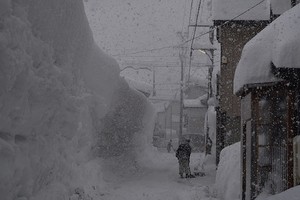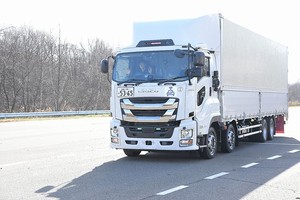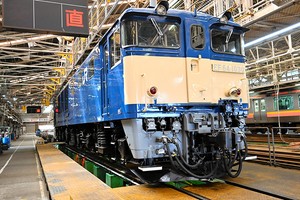THE ASAHI SHIMBUN
January 2, 2024 at 15:29 JST
Experts warned of powerful aftershocks in the days ahead as they puzzled over the forces that generated the magnitude-7.6 earthquake in the Noto region of Ishikawa Prefecture on New Year’s Day.
The fact it occurred during an earthquake swarm caught seismologists by surprise. They also noted it was stronger than a catastrophic earthquake that hit the Kobe area in 1995.
Junichi Nakajima, a professor of seismology at Tokyo Institute of Technology, said it was an extremely large quake for a land-based temblor.
“Generally speaking, an earthquake swarm does not produce a quake with a magnitude over 6. To be honest, I am surprised because this means a fault moved over a wide area,” he said.
Strong temblors, but none nearly as high as the one on Jan. 1, have occasionally hit the Noto Peninsula over the past three years.
The quake struck at 4:10 p.m. A subsequent temblor had an intensity of 7, the highest level on the Japanese scale.
Naoshi Hirata, professor emeritus of seismology at the University of Tokyo who also chairs the government’s Earthquake Research Committee, noted the magnitude of the Jan. 1 quake was greater than the 2016 Kumamoto Earthquake and the 1995 Great Hanshin Earthquake that claimed around 6,400 lives.
“I cannot make a conclusive statement until I peruse the detailed data because the focus is close (to other large quakes in the region),” he said. “But I believe this was the biggest in this latest spate of seismic activity.”
The northern part of the Noto Peninsula has been plagued by extreme seismic movement since December 2020.
Officials said 506 quakes with a seismic intensity of at least 1, the smallest class that can be felt by humans, had been observed until last month.
One cause is believed to be water and steam rising under intense pressure from deep underground, which triggered an earthquake with a magnitude of 6.5 on May 5 last year.
Given the intensity and magnitude of the latest series of quakes, Hirata urged residents to be on their guard against “strong jolts over the next week and especially over the next two to three days.”
He urged residents whose homes were damaged to evacuate as soon as they can.
Hirata urged those living in coastal areas to remain vigilant as tsunami in the Sea of Japan reach shorelines quickly after a big earthquake.
He said the quake occurred in a focal zone of an earthquake swarm, which suggests “it is likely part of that activity.”
The area off the coast of Noto Peninsula is known as an active fault line.
Nakajima said further analysis of the distribution of aftershocks is needed to determine if the latest activity occurred along a known fault or was generated by an entirely new one.
“While the quake mechanism is similar to past quakes in the Noto Peninsula, I never thought a quake of such large magnitude would occur there,” said Takuya Nishimura, a professor of geodesy at Kyoto University’s Disaster Prevention Research Institute. “It is close to the strongest one ever to occur along the Sea of Japan side.”
Tsunami generated by a magnitude-7.8 quake off the southwest of Hokkaido affected coastal areas off the Sea of Japan in 1993. A magnitude-7.7. earthquake a decade earlier also damaged central coastal areas of the Sea of Japan.
Given that the latest quake approached those magnitudes, Nishimura speculated a fault line may have moved outside of the focal zone of the earthquake swarm.
The movement of one fault could lead to greater activity along nearby faults because they are distributed in a complicated way along the Sea of Japan coast, he said.
(This article was compiled from reports by Ryo Sasaki, Eisuke Sasaki, a senior staff writer, and Shigeko Segawa.)




















A peek through the music industry’s curtain at the producers who harnessed social media to help their idols go global.
A series based on diplomatic documents declassified by Japan’s Foreign Ministry
Here is a collection of first-hand accounts by “hibakusha” atomic bomb survivors.
Cooking experts, chefs and others involved in the field of food introduce their special recipes intertwined with their paths in life.
A series about Japanese-Americans and their memories of World War II